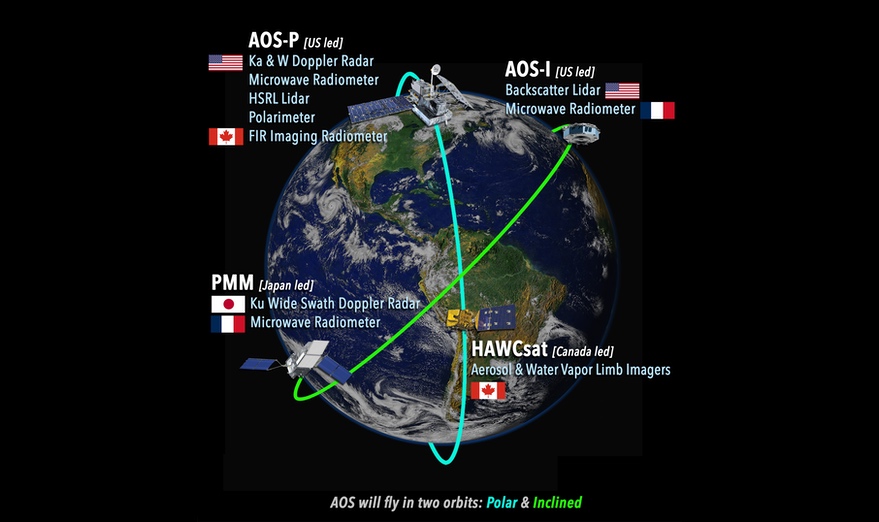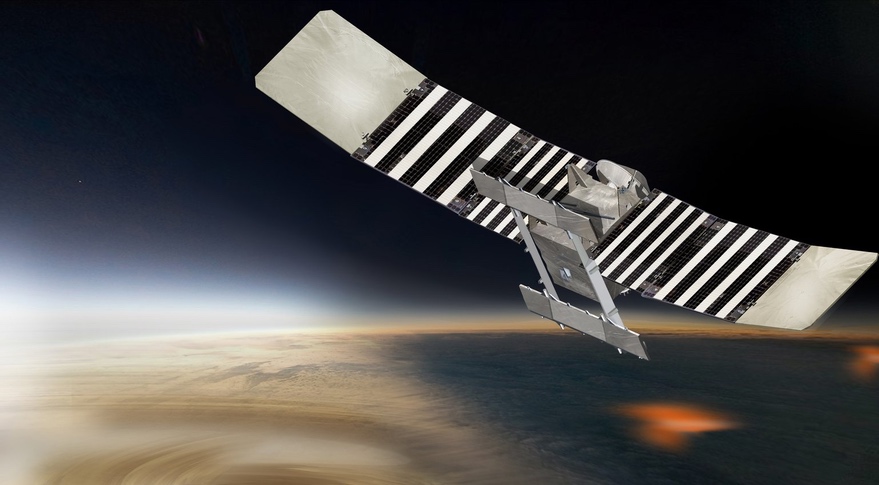WASHINGTON — An independent review warned of potential cost overruns on a future major NASA Earth science mission, prompting NASA to consider removing some instruments from it.
NASA is in the process of conducting reviews known as Key Decision Point (KDP) A for three elements of its Earth System Observatory line of missions: Atmosphere Observing System (AOS), Mass Change, and Surface Biology and Geology. The KDP-A reviews would allow the proposed missions to move into Phase A of initial development.
NASA, though, delayed the KDP-A review for AOS, which had been scheduled for December, after receiving an independent review of the Earth System Observatory effort commissioned by NASA in June and completed in October. That review concluded that AOS, which will include satellites both in polar and mid-inclination orbits, would cost $2.4 billion, $500 million more than the project’s own estimate.
“That is a warning that got a lot of attention at the agency level,” said Julie Robinson, deputy director of NASA’s Earth science division, during a town hall meeting about the mission at the Fall Meeting of the American Geophysical Union Dec. 16. “It’s a red flag.”
A major factor for the cost growth in the opinion of the independent review board (IRB) is the low technical maturity of two instruments planned for it, a dual-band Doppler radar that would operate at Ka and W bands, and a high spectral resolution (HSRL) lidar. The radar would enable measurements of clouds and precipitation, while the lidar would characterize aerosols in the atmosphere.
While the independent review suggested saving money by replacing the dual-band with a single-band one, and the HSRL lidar with a more conventional lidar, Robinson said it was too early in the development of AOS to make that decision.
“We really need more time to study it,” she said, something that can be done during Phase A of AOS. That includes studies on building the instruments in-house versus procuring them, and requests for information to assess industry’s capability to provide those instruments.
NASA now plans to hold the KDP-A review in January, a delay she said was primarily intended to coordinate work among centers involved in AOS as well as international partners. Canada and Japan are providing their own spacecraft for AOS, along with instruments from France.
The prospect of removing the dual-band radar and HSRL lidar had alarmed scientists, who worried it would significantly reduce the scientific productivity of AOS. Robinson agreed, but noted the agency had not made any decisions about those instruments. “The IRB report did discuss that these descopes are significant, and we recognize that as well. This is not what you were hoping to get out of this mission,” she said. “We have to do these Phase A studies.”
However, she said that the agency needed to find some way to reduce the cost of AOS to avoid cuts elsewhere in the overall Earth System Observatory. “If it would really be half a billion dollars more than is budgeted to do AOS,” she said, “then we would need to drop another mission.”
The independent review concluded the costs of the other two missions, Mass Change and Surface Biology and Geology, were close to project estimates: $454 million for Mass Change and $752 million for Surface Biology and Geology. The review, though, warned that Mass Change, which it described as a “near-copy” of the current GRACE-FO mission, carries risks from using that design and doesn’t improve on resolution and sampling as recommended by the Earth science decadal survey.
NASA initiated the Earth System Observatory effort in 2021, using it as the umbrella for the missions that will implement the five “designated observables” from the decadal survey: aerosols; clouds, convection and precipitation; mass change in snow, ice and water; surface biology and geology; and surface deformation and change. AOS will handle the aerosols and clouds, convection and precipitation observables.
The agency has not started formal planning yet for the mission to implement the fifth designated observable, surface deformation and change. Instead, NASA will use data from the NASA-ISRO Synthetic Aperture Radar (NISAR) mission scheduled for launch in 2024 to support science involving surface deformation and change.










